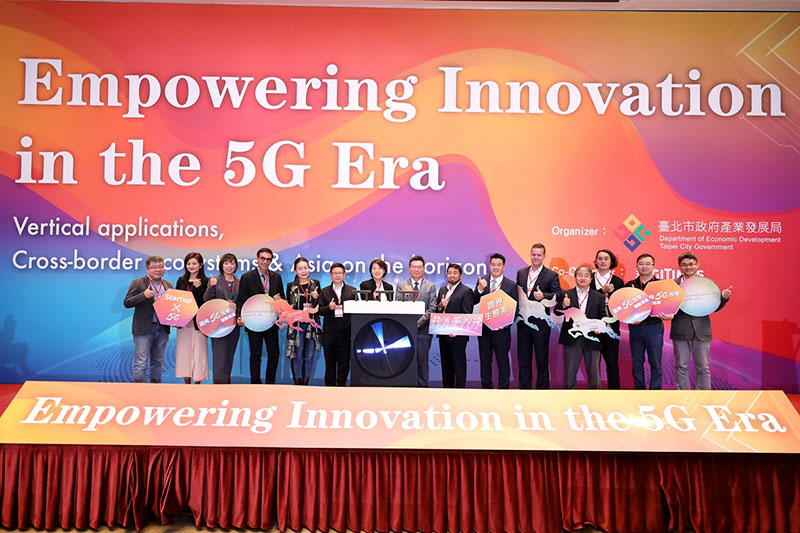How is 5G going to affect our lives? Hive Life sat down with Leland Lai, an expert in the mobile industry, to ask him to debunk the hype.
The next generation of mobile Internet technology is upon us. Promising speeds and capacities up to 100 times faster than its predecessor 4G, thanks to its use of various new technologies utilising a higher frequency spectrum (ranging from 1GHz to 100GHz, with bands higher than 6GHz known as the millimetre wave), 5G has been hailed by companies and telecom operators as the panacea to all network problems. But, will it live up to the hype? And, what will it actually change? For Leland Lai, a veteran in the mobile Internet sector with over 20 years of experience, the answer to how 5G will affect us is still a tricky one to pin down. The former Managing Director, Asia at GSMA (the trade organisation for almost all mobile carriers in the world), and currently a Technology, Media and Telecom Consultant at SBI E2 Family Advisors, Leland shares his expertise. “It’s almost like asking what the Internet was, back in the 90s. People knew it was going to be big, but nobody could have predicted it would evolve to create things that we now know as Yahoo, Alibaba, Apple, Netflix and TikTok,” he notes. “What I can say is, while the phone was about connecting humans to humans, 4G was about connecting humans to the Internet. And now, 5G is about connecting machines to machines on a massive scale, which can then translate to self-driving cars, remote surgeries, VR and enable things that weren’t possible before.”
Read on to discover his three key insights.

#1
Be Ready for the Invention of New Industries
When the Internet came out, who would have guessed that the sharing economy would become so successful and services such as AirBnB, Uber, Facebook and Instagram would come about? Now, with the benefit of hindsight, we need to consider 5G in the same way. “The biggest thing that is going to happen is the creation of industries that don’t exist right now,” says Leland. “Henry Ford is known to have said ‘If I’d asked customers what they wanted, they would have told me, ‘A faster horse!” Most VCs did not believe the sharing economy would have worked. Yet, with 4G-enabled GPS, 4G-enabled mobile security and payments, plus new user behaviours, services like Uber and Lyft have become everyday realities.”
5G’s increased speeds and lower latencies (i.e. the time between a button press and the action, or your data arriving with its receiver) will effectively make it possible to control machines over long distances remotely – without any noticeable lag. “For the first time, we can be in two places at the same time,” exclaims Leland. “A doctor will be able to perform surgery in a different physical location. Self-driving taxis might become a reality (due to the much faster speeds of 5G enabling real-time, human-like reaction time). These are industries that don’t exist right now, but could in the future. Virtual reality (VR) is going to become a big industry. With 4G at the moment, the latency between the human eye and brain can be more than 20 milliseconds, which would cause you to puke.” It’s a well-known symptom, currently. Virtual Reality Sickness is caused by a sensory dissonance between expected motion and the motion that is actually experienced. “With 5G, we can bring that latency down to less than 10 milliseconds, making VR a true reality. This is going to be one of the biggest impacts of 5G.”
You might also like Is China Leading the World in Tech?

#2
5G is Fast, but There’s Still Work to be Done
Some mobile carriers have already started to roll out 5G in select locations, but the full effects will only be seen once its deployment hits a critical mass. “An educated guess of pervasive adoption of 5G will be 2025. The leaders are the United States, China and Korea at the moment,” explains Leland. “The major issues right now are with spectrum allocation and the sheer number of cell sites that need to be deployed. With 5G, we can squeeze approximately three to 10 times more data into the same amount of spectrum because of the improved antenna and other techniques.” But, the spectrums are still proving a finite resource for carriers. “Regulators and operators around the world are always fighting for limited and precious spectrums to build their infrastructures.”
The other hurdle of deployment 5G faces is range. Due to the higher frequency mobile spectrums the technology uses, it is proving challenging to roll out the infrastructures. “One 4G Base station can cover kilometres, whereas a 5G base station can only cover meters, so the number of cell sites needed just to provide the same coverage as 4G is exponentially large. This is not a technical problem or even an economic problem. It’s a scaling problem. New and creative methods such as using software solutions are helping to make managing larger and complex networks more sustainable.”

#3
Is All the Hype Justified?
As one of the most talked-about technology releases, bold claims are being made by mobile carriers about 5G. But is it going to be everything they hope? “The reality is, once you get beyond the defined technical specifications, no one truly understands the possibilities of 5G from a usage standpoint and what it means for us,” says Leland. “It will improve productivity and creativity, especially for applications involving the Internet of Things (IoT).” 4G can connect up to 4000 devices per square foot, but 5G can connect up to 1,000,000 per square foot. For businesses, that means the arrival of faster smart city sensors and a vastly greater number of simultaneous IoTs. One way businesses could prepare for these opportunities and translate this into new commercial applications and revenue would be to appoint a 5G tzar with the authority to drive their digital strategies and roadmaps, interface with the fast-changing 5G landscape and innovations, and transform those strategic roadmaps into revenue.”
All photo credits go to Digitimes.
Related Articles
From Google to Twitter, Silicon Valley Prodigy Builds Startup with Speculated USD200M Valuation
Tech Startup DigitalOcean: The Secret To Becoming A Unicorn
Payment Giant Stripe Talks About Future of the Internet Economy





